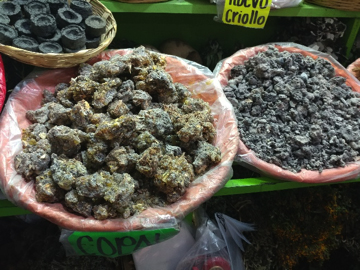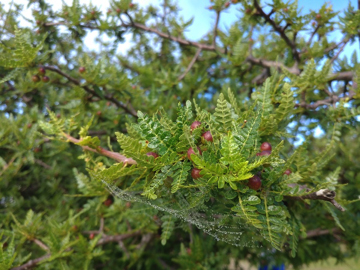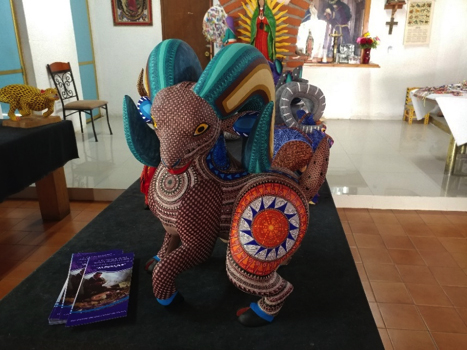Uses of the Copal Tree in Zapotec Oaxaca: Ritual and Economy
Article & photos by Timothy Herrera, Tinker Grantee, Graduate Teaching Fellow, Department of Anthropology
Supported by my grant from the Tinker Foundation, my summer research was an enriching experience that allowed me to practice the anthropological methodologies I have been learning about for years. The purpose was to conduct ethnobotanical research on how the people from the Valles Centrales region in the state of Oaxaca, Mexico, use the copal tree, Bursera spp., and the incense derived from the resin of the tree ritually and daily. I will apply this research toward writing a paper to complete a requirement towards receiving a master’s degree in cultural anthropology.
Previously I worked on an iconographical analysis of a Pre-Columbian Mixtec Codex, Codex Zouche-Nuttall. The pictorial depictions of copal being used as incense, and for offering purposes inspired me to conduct contemporary research on copal usage ritually in Oaxaca from indigenous descended communities.

I conducted semi-structured interviews with copal vendors, alebrije artisans, huehuetes (religious specialists), and other community members in Oaxaca de Juarez, San Antonio Arrazola, and Teotitlán del Valle. I also carried out participant observation by attending masses at different Catholic churches, attending the guelaguetza festival, hiking to find local copal tree variants, visiting museums, visiting tree reforestation nurseries, exploring different mercados and tianguis (markets), and by learning how to make woodcarvings out of copal wood. I met my objectives by interviewing adult community members from both sexes that spanned from people in their twenties to their eighties.
I learned an important lesson while in Oaxaca about the limits of translating information. I am bilingual in Spanish and English, but in one of the pueblos I worked in they spoke a Zapotec dialect as their primary language. I gathered the empirical and practical information I needed about copal, as the people also speak Spanish, but I will never be able to understand how the people of Teotitlán del Valle truly think or feel about copal until I learn Zapotec.

I would recommend to other people wishing to pursue research internationally not to get discouraged if they are having trouble communicating, because it takes time and practice to learn the regional variant of a language. Therefore, ethnographical work is more time consuming than other types of qualitative data collection.
I hope that the results of my research will contribute to the general knowledge of the importance of copal and its resin in the cosmological, ritual, historical, and daily usage for indigenous descended communities in Valles Centrales, Oaxaca, Mexico. This will highlight the importance of sustainably keeping this resource available for the communities that depend on or highly value this product in the future. I presented the preliminary findings at the 2018 LALISA (Latin American, Latino, and Iberian Studies Association of the Pacific Northwest) conference at Lewis and Clark College on April 6, 2018.
—Timothy Herrera, a graduate teaching fellow in the Department of Anthropology, is conducting collaborative research with two Zapotec communities.

